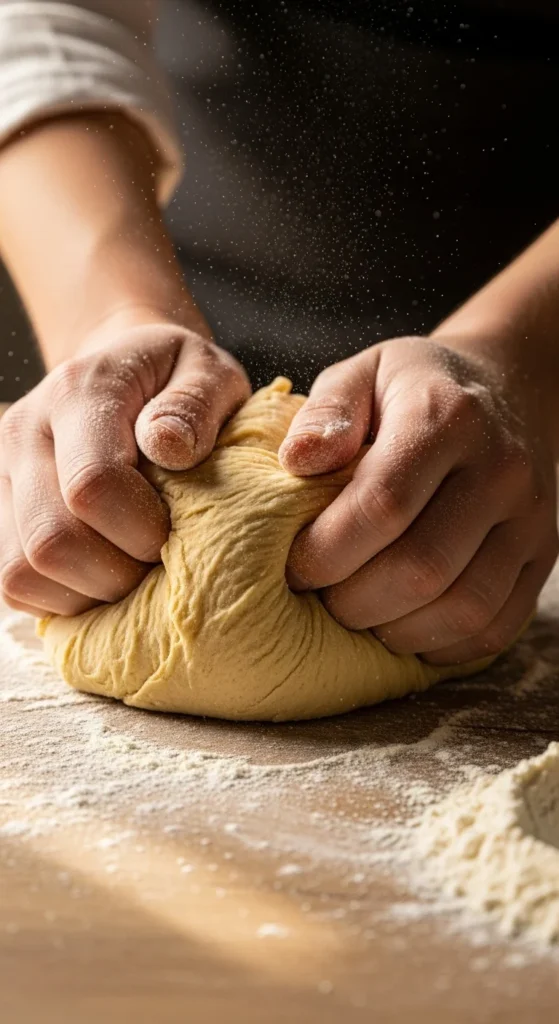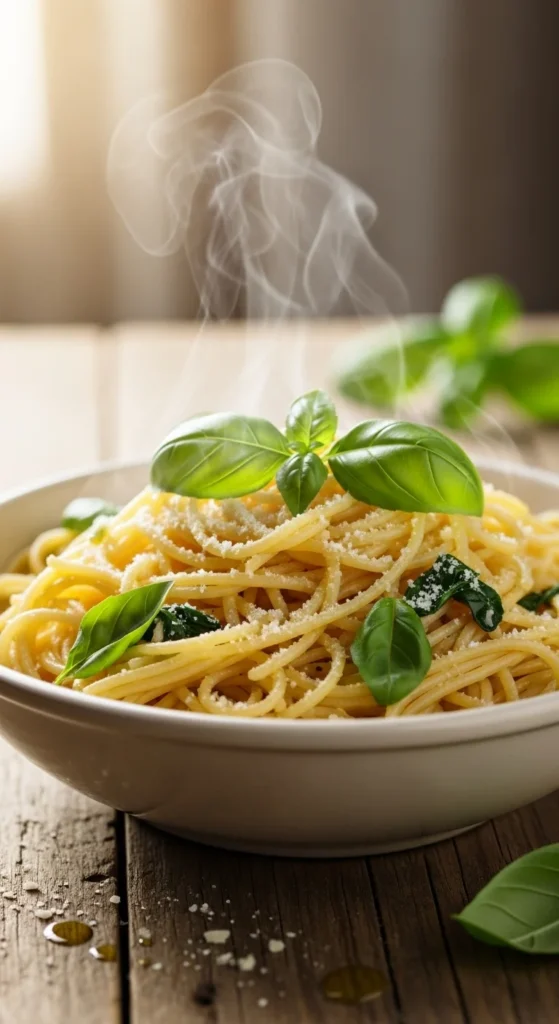There’s something deeply satisfying about making pasta from scratch — the soft, silky dough, the rhythmic rolling, and that first bite of tender noodles cooked to perfection. It’s one of those old-world kitchen skills that feels like pure magic when you realize how simple it really is. No fancy equipment required — just your hands, a rolling pin, and a little patience.

Why Make Pasta by Hand?
Homemade pasta tastes entirely different from store-bought. It’s softer, fresher, and holds sauce beautifully. Plus, it’s a hands-on experience that connects you to your food in a whole new way.
You only need two main ingredients — flour and eggs — and about an hour from start to finish. Once you master the basics, you can experiment with different shapes, flours, and even flavors (like spinach or beet pasta!).
Step 1: Gather Your Ingredients
For a classic Italian pasta dough, keep it simple:
You’ll Need:
- 2 cups all-purpose flour (or “00” flour for a silkier texture)
- 3 large eggs
- ½ teaspoon salt
- A drizzle of olive oil (optional, for extra elasticity)
Tools:
- Rolling pin or pasta machine
- Mixing bowl
- Knife or pizza cutter
- Fork and clean work surface
Pro Tip: If you can, use “00” flour — it’s finely milled and gives your pasta that authentic, delicate texture found in Italy.

Step 2: Make the Dough
Now for the fun (and slightly messy) part — forming your dough by hand.
- Pour the flour onto a clean surface and shape it into a mound.
- Use your hands to make a well in the center — deep enough to hold your eggs.
- Crack the eggs into the well and add the salt.
- Using a fork, whisk the eggs gently, pulling in flour from the sides a little at a time.
- Once the dough starts to come together, use your hands to knead it into a ball.
At first, it might feel sticky or shaggy, but don’t worry — it will smooth out as you knead.
Knead for about 8–10 minutes, pressing with the heel of your hand and folding it over until it’s soft and elastic.
Wrap the dough in plastic wrap and let it rest for 30 minutes at room temperature. This allows the gluten to relax, making it easier to roll later.

Step 3: Roll It Out
Once rested, it’s time to transform your dough into thin, delicate sheets.
- Divide the dough into 2–4 smaller portions (it’s easier to work with).
- Flatten one piece slightly and dust it with flour.
- Use a rolling pin to roll it out from the center, turning occasionally to keep it even.
- Keep rolling until it’s thin enough that you can see your hand through it.
If you have a pasta machine, start on the widest setting and work your way thinner with each pass.
Tip: Don’t rush this step — thin, even sheets are what make pasta cook evenly and taste divine.

Step 4: Cut and Shape the Pasta
Now that you have your sheet of dough, decide your shape!
For Tagliatelle or Fettuccine:
- Lightly flour the sheet and roll it up like a jelly roll.
- Slice into thin ribbons using a sharp knife.
- Unroll the ribbons and dust lightly with flour to prevent sticking.
For Lasagna Sheets:
- Cut into large rectangles and let them dry slightly before layering.
For Ravioli:
- Place small spoonfuls of filling on one sheet, cover with another, and press around each mound before cutting into squares.

Step 5: Cook to Perfection
Fresh pasta cooks much faster than dried pasta — usually in 2 to 3 minutes!
- Bring a large pot of salted water to a gentle boil.
- Add the pasta and cook until it floats to the surface.
- Drain immediately, reserving a little pasta water to blend with your sauce.
Toss your pasta in butter, olive oil, or your favorite sauce right away to prevent sticking.
Delicious Pairings:
- Fresh fettuccine with creamy Alfredo sauce
- Tagliatelle with slow-cooked ragu
- Pappardelle with mushrooms and truffle oil

Tips for Pasta Success
- Use fresh eggs: They bind the dough better and give a rich yellow hue.
- Don’t skip resting time: This makes the dough easier to roll and shape.
- Flour as needed: Light dusting keeps things from sticking — but don’t overdo it!
- Experiment: Try mixing in herbs, spinach puree, or even squid ink for flavor and color.
Final Thoughts
Making fresh pasta by hand isn’t just cooking — it’s an experience. The slow, deliberate steps, the feel of the dough, and the final plate of tender noodles are all part of the joy. Once you taste the difference, you’ll never go back to boxed pasta.
So roll up your sleeves, dust your counter with flour, and make something beautiful from scratch.



Leave a Reply